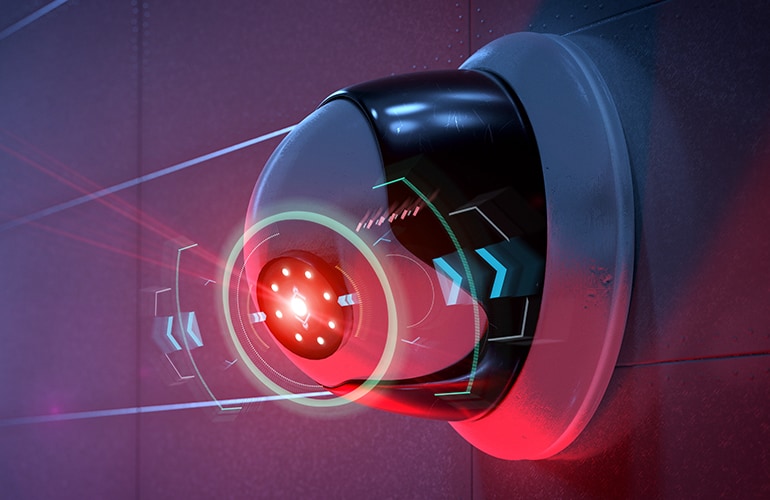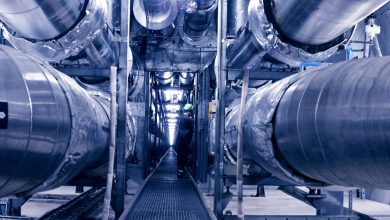
Ask anyone who relies on them each and every day, and they’re likely to be surprised that inspection camera technology really only dates back to about 1960, when optical physicists Narinder Kapany and Brian O’Brien figured out how to see inside nuclear reactors and jet engines without cracking them open. Today, many an industry would be high and dry without inspection cameras, with plumbers scrambling to peer down drains and pipes, mechanics unable to get clear images inside a fuel tank, pest controllers poking their noses rather than a snake-like flexible camera into wasp nests, air conditioner technicians no longer able to easily diagnose the fault – and the list goes on and on. And they are so easily accessible that you can get your hands on one at any reputable supplier like RS Components.
In short, there are a million reasons why your organisation’s operations may be made a million times easier with an inspection camera. But for all of those millions of potential applications, there are also many different inspection camera technology types out there on the market to get those specific tasks done. There are medical-like endoscopes, borescopes, wireless cameras, ones with lights, ones with telescopic capabilities, ones with audio, ones designed for data storage, streaming and sharing, and so on.
But while there’s a lot out there, we’re focusing on the sorts of typical inspection cameras used by professionals including plumbers, electricians, builders, mechanics, pest controllers, surveyors and more. All cameras in this category feature three primary parts:
- The camera
- The snake-like flexible arm
- The handset.
Browse any inspection camera catalogue, however, and you’ll notice different configurations, sizes, shapes, features – and prices! So what’s the best inspection camera for your specific industry, organisation or application? Let’s break down the general considerations for the selection process:
-
The camera
While the earliest inspection cameras worked only with light and fibre optics, today’s fully-electronic versions involve not only super-high-tech miniature camera technology, but a much more affordable price. However, the smaller the camera, the more problematic and precise the manufacturing needs to be – and the more you’ll pay.
The other aspect to consider is the image sensor and processor technology that needs to be on-board to get those images to the digital handset, and yet some manufacturers are still producing products with impressively-tiny 4mm (or even smaller) cameras. But, again: the smaller you go, the higher that price will be.
-
The resolution
As mentioned above, the size of image sensors is shrinking at an impressive rate – even whilst putting out incredible levels of resolution. The more cost-effective offerings will therefore hurt you in the resolution department, especially as sub-6mm camera solutions typically require LED lighting for that lower light-per-pixel setup.
Also true is that inspection cameras that will operate in pitch-dark settings, like plumber pipes, ramping up the need for greater camera sensitivity. However, the good news is that the camera head size for pipes is normally less critical, making a VGA resolution setup viable.
-
The focal length
The highly specialised nature of very small lenses means that focal length is a major consideration. For example, if you need your camera to peek inside an engine cylinder, you’ll need a setup that is designed for close range otherwise field depth will be compromised. For less critical applications, a wider focal range will suffice.
-
The sensor
Another consideration is the sensor, as many applications will require very high sensitivity to darkness. In these cases, special software for image enhancement is also typical, which can even eliminate the need for separate lighting and the greater power consumption that requires.
-
The LED
Knowing that your camera will require LED lighting is not enough, because some LED setups have the perfect brightness and field of beam for a particular camera inspection application – and some are simply cheaper and inferior. To get around the problem, some inspection cameras may feature multiple LED lights, but this can often result in distorted imagery.
-
The flexible arm
The length of the arm/pipe is not the only consideration here. Also crucial are the operating conditions, making considerations for water, chemical or dust-proof setups important. Then there’s the pipe flexibility, as your application may require either more flexibility or more rigidity, and also overall product durability – because a setup with a low-cost crystal oscillator won’t withstand much of an impact.
-
The handset
A bigger screen is best, right? Actually, the resolution could make a smaller screen easier to read – but the most important consideration is that the camera and handset are designed with one another in mind. Then, you may need a setup that can be operated with only one hand, or that is easy for an untrained user to operate. You may need better recording or playback capability, greater on-board memory, or Wi-Fi and USB functionality.
The bottom line is that when you’re investing in professional technology to make your operations easier and more productive, it’s crucial to match what you select with the precise requirements for your particular applications. Paying less may actually get you a more appropriate product for what you need to use it for, while on the other hand a few extra dollars could soon be paying you back with saved time and optimal performance.




